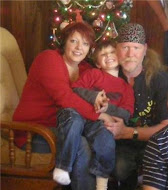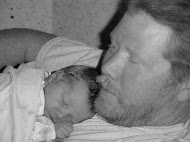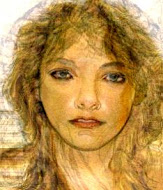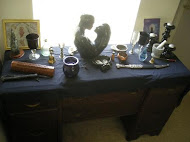* Will the Real Santa Please Stand Up *
Written by Aedgisl (I can't locate the given URL)
It is that time of year again, when people bring themselves on the brink of poverty because the family wants expensive Christmas presents, supposedly brought to them by a fat white-bearded fellow riding a sled pulled by reindeer, called Santa Claus. But where does this myth come from? When one thinks of Santa Claus, the association with the old Germanic Gods is easily made, and for good reason, there is where the tradition comes from. Santa is the christianized version of Germanic Gods that play a role during Yule and many modern Christmas traditions are also connected with Yule, the Germanic/Scandinavian thirteen-day celebration of the New Year (on December 21, the winter solstice). But which God is Santa? There are several candidates.
Wodan / Odin:
In the German lands there is an old belief, connected with the winter season and especially with the Yule period, called the Wild Hunt. It is said that during the dark and stormy winter nights, Wodan/Odin (meaning something like 'Rage' or 'Raging Wind'), as a God of the dead, rides the sky on his eight-legged horse Sleipnir, accompanied by Holda (or, according to some sources, Perchta/Berchta or even Frigga), Goddess of the Dead (maybe the German name for Hel(a), queen of Helheim, and in later traditions the witch in the German folktale Frau Holle) and a wild pack of dogs and souls of the dead (known as Holden or Perchten, named after Holda/Perchta). During these raging hunts they would visit the homes of the people ('Wodan's Host') and all those who would be careless enough to be outside during these nights, and those who would mock this event, would be dragged along by this pack to the realm of the dead or punished in some other way. Those who were good would sometimes receive a gift.
The modern tradition of hanging a sock or setting a shoe near the fireplace with a carrot and hay in it also finds its origin in this belief. In the old days this would be done as a gift to Sleipnir. In the Low Countries (Belgium, Netherlands, NW-Germany) the feast of Saint Nicolas - Sinterklaas) is still celebrated. In this tradition it is the belief that each year, Saint Nicolas comes with his ship from Spain to the Low Countries, a few weeks before his birthday on December 6th. He takes with him presents (candy originally, very expensive toys these days) for the children who have been good, and a bag of salt for those children who have been bad. On the eve of December 5th, the night before his birthday, Saint Nicolas, together with his helpers, called Black Pete's (Black for two reasons, the soot from chimney's and because the are supposed to be Moors (North-Africans), rides from rooftop to rooftop on his white horse, and at each house, the Black Petes climb down the chimney to put the present (or the bag of salt) in either a shoe or a sock that the children have set in front of the fireplace before they went to bed (they sing songs and leave a carrot and hay in the shoe or sock for Saint Nicolas' horse). The next day the children then find their presents in their shoe or sock. Saint Nicolas is depicted as a tall, not too fat old man (hundreds of years old by now) with a long white beard and a red coat. It is also said that those children who mock him or have been very bad, are taken back to Spain. This Saint Nicolas tradition has its several origins; there was a 4th century Turkish bishop called Nicolas who became saint, but the whole tradition also bears a striking resemblance with the Wild Hunt myth. But it leads of course to the question of how a Turkish saint ever made his way to the Low Countries. It is probably a legacy of the Spanish occupation of the Low Countries during the 16th and first half of the 17th century (ended due to the eighty-year war between Spain and the Netherlands).
Frey(r) / Fro / Fricco:
In another Yule tradition, focuses on Frey(r) (meaning 'Lord'), Fro in southern Germany, Fricco in Sweden, who is Fertility God, God of Peace and God of Light (he is Sungod and his sister Freyja is Moongoddess). He is said to ride around the world in his chariot, pulled by the golden boar Gullinbursti (Goldbristled') on the eve of Yule (Yuletide) to bring back the light, hope and love to the world and the people. Yuletide is on the winter solstice (21 December), the day with the least hours of daylight on the Northern Hemisphere, so having Frey(r) bringing back the sun on this day is a most important event. During the winter season the nights in the northern lands are very long and cold, and the dark and evil spirits very are very active in this period, so with the return of the light and warmth of the sun, these perils would also disappear again. It also meant that spring would soon come, and that food could soon be grown again.
A Yule tradition is the burning of a Yule log (and other fires). This is done to capture the light during the darkest time, to keep the evil spirits out and as a prayer for the return of the sun. It is thought that burning them brings good luck and hope. These logs have to burn all night during Yule.
The image of the modern Santa Claus, a big, friendly character in a sled pulled by reindeer riding through the sky on Christmas Eve and delivering presents resembles the image of Frey(r) riding around the world bringing back the light to the people. Even the elves, the helpers of Santa Claus, fit in the picture, as in Germanic religious lore, Frey(r) is lord of Ljössalfheim, the world of the Light-Elves. And during Yule, boars were sacrificed for good fortune, or bread was baked in the shape of a boar (Frey(r)'s boar). While sacrificing/eating the Yule boar, oaths sworn. (On a side note, one of the reasons for decorating a Yule tree was to give small gifts to the High Folk, the Gods, Elves and Disir. Originally food (fruits and bread, but also milk and honey) and images of holy animals would be the decorations, and the candles in the tree are meant to keep the evil spirits away. Evergreens were used because they keep their needles while other trees loose their leaves during the winter).
Thor / Donar:
The least likely but mentioned nonetheless is Thor/Donar. The God of Thunder is said to ride a chariot pulled by two goats (Tanngnjöstr and Tanngrisnir), which again resembles the modern image of Santa Claus. Another similarity between Thor/Donar and Yule is the ability of Thor/Donar to slaughter his goats, eat them and then bring them back to life again, a myth that looks a lot like the some Scandinavian traditions of the Yule-buck, in which the buck is killed and then brought back to life, symbolizing rebirth. In most other traditions however the Yule-buck (a wight, or ghost) is a frightening appearance bringing either good or bad luck when it visits the homes of people (again, Wild Hunt influence?). Also the hanging of little goat images in the Yule tree or in wreaths and the making of straw goats for Yule (particularly in Denmark and Sweden) seems to be connected with Thor/Donar.
Conclusion:
No matter which God became Santa Claus in the Christian tradition of Christmas, the severe influence from the old Germanic/Scandinavian religion is obvious, especially in the northern lands of Europe and North America. But naturally, other winter solstice celebrations, such as those around the Mediterranean such as Saturnalia also had their influence on Christmas. And no matter which version of the winter solstice celebration you follow, remember that it is about the changing of the cycle of the year, the return of the light in a period of darkness, the death and rebirth of life and it is the best feast of the year.
Sources:
- The Book of Troth
- Ancient Origins of Yule
- Gods and Myths of Northern Europe - H.R.E. Davidson, Penguin Publ.
- Mythologisch Woordenboek - G.J.M. Bartelink, Prisma Publ.
Disclaimer: No one involved in this blog or its contents may be held responsible for any adverse reactions arising from following any of the instructions/recipes on this list. It is the reader's personal responsibility to exercise all precautions and use his or her own discretion if following any instructions or advice from this blog.















No comments:
Post a Comment